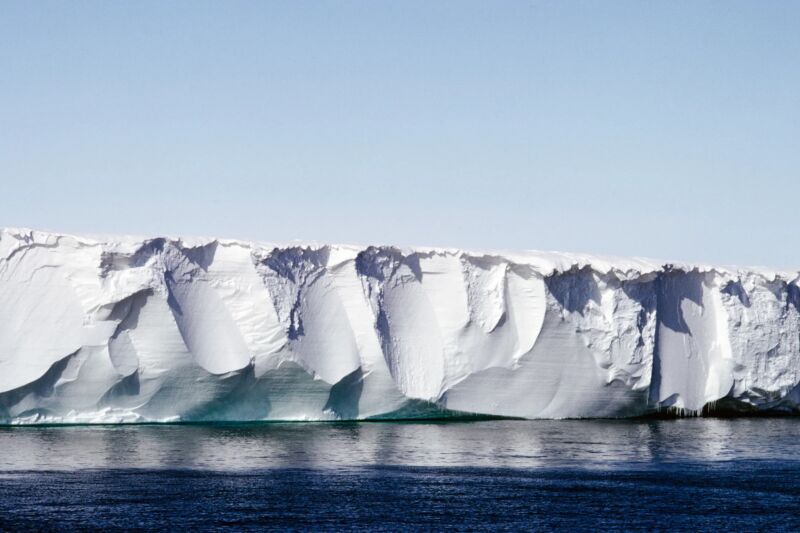But without groundwater, those models are incomplete. Researchers had long observed that more water was spilling out from underneath the Whillans ice stream than expected, says Slawek Tulaczyk, a professor of earth sciences at UC Santa Cruz who studies the region but wasn’t involved in the research. This was strange. As ice sheets approach the ocean, they tend to get thinner and thus less good at insulating the ground from the frigid Antarctic air. At these edges, water should tend to freeze, slowing down the movement of the ice. But that wasn’t what glaciologists were seeing. “This was the conundrum,” he says. Somehow, the patterns they observed were “thwarting thermodynamics.” The researchers hypothesized that nearly half of that water must be rising up from unmapped sources underground.
Gustafson’s team set out to map it. The ice above Lake Whillans is in the west part of the Antarctic, at the foot of the sheer Transantarctic peaks that divide the continent. The area gained favor with scientists conducting research in the pre-GPS era because those mountains helped as navigational aids. But it’s remote. “It was the longest, most grueling camping trip of my life,” Gustafson says of the weeks spent trudging around the snow and ice, digging out holes where the team would leave devices that passively listen for electromagnetic signals. The instruments would sit there for 24 hours before the researchers dug them up and moved them to the next site two kilometers away.
MT involves using electromagnetic waves produced by a variety of sources—from the high-frequency sources like lightning to the low-frequency undulations of solar wind. As these electromagnetic waves penetrate Earth’s crust, they wobble depending on how well they are conducted, allowing scientists to study what kinds of materials lie below. Typically, geologists use MT to look deep into the lithosphere—tens of kilometers below Earth’s surface—to study bedrock and geological faults; oil and gas engineers have used MT to map out energy reserves in the seafloor. But more recently, the technique has proven useful to Antarctic researchers looking to take a peek under ice. Gustafson’s team was especially interested in shallower measurements—about 1 kilometer deep. In the data, she could see the crackling of lightning storms on distant continents.
After the team analyzed the data, a more complete picture of the Antarctic’s continental depths emerged. The results suggested that the deepest groundwater is the saltiest, roughly the same salinity as seawater, and that it becomes less salty nearer the surface. This likely means that groundwater is being exchanged with the fresh meltwater found in the subglacial lakes and channels above it. That may help explain why there’s so much life in places like Lake Whillans. “Groundwater moving within the sediments can move carbon along with it, providing fuel for these microbes,” Gustafson says. That raises tantalizing possibilities for what sort of life might be clinging on in other parts of the continent, she adds.
That exchange also means groundwater is playing a role in the Slip ’n Slide. “We haven’t been looking at it hard enough,” says Winnie Chu, a glaciologist at Georgia Institute of Technology who wasn’t involved in the research. Groundwater adds a potential dose of uncertainty to models predicting the flow of ice, she explains. As the Antarctic warms, those vast reservoirs may be able to soak up the melt occurring at the base of glaciers—potentially slowing the impact of rising temperatures. Or they might start releasing more water as the ice above thins out, easing pressure on the sediment. “Now that we can see it, we can move on to the next stage and ask whether the groundwater aquifer has actually been affecting Whillans ice stream velocity,” Chu says. “That will help us build better models, especially for prediction.”
The data around Whillans is a good start for answering those questions, Gustafson notes, because it’s “rather boring” in terms of ice movement—that is, although fast-moving, the ice is pretty stable, not gaining or losing mass. That makes it a good baseline for future groundwater studies in places like Thwaites, where researchers are racing to build more complete models of ice movement in a decidedly less-boring region. Researchers are planning MT experiments there later this year.
This story originally appeared on wired.com.
